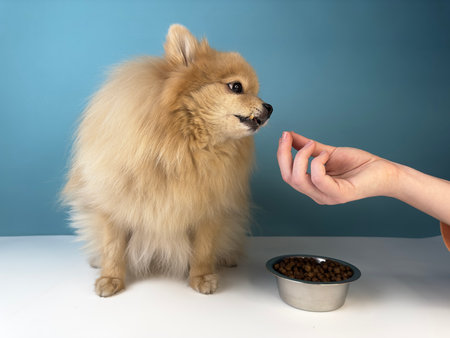Understanding Your Pet’s Personality
Before you even pick up a brush or nail clipper, it’s important to recognize your pet’s unique personality and comfort zones. Every pet has their own quirks—some dogs melt into the couch at the sight of a grooming glove, while others bolt under the porch if you just mention “bath time.” If you’re living the country life, you might have a sassy barn cat who thinks she runs the place, or maybe a mellow old hound who’s happy as long as there are treats involved. Take some time to observe how your pet reacts to different situations and environments. Do they like being touched on certain spots? Are there areas they’d rather you avoid? Understanding these little details will help set both of you up for a smoother grooming experience. Remember, patience and empathy go a long way—your furry friend will thank you with wags, purrs, or maybe just less drama next time you break out the brush.
Choosing the Right Grooming Tools
Picking out grooming tools for your pet is a bit like selecting the right garden tools before tending to your backyard. Every pet, whether they’re a shaggy sheepdog, a sleek tabby cat, or a floppy-eared bunny, has their own unique needs based on their coat type and size. Using the wrong brush or comb can be uncomfortable and even stressful for your furry friend—just imagine trying to weed your flowerbed with a snow shovel! To set both you and your pet up for stress-free grooming sessions, it’s important to match your tools to their specific needs.
| Pet Type | Coat Type | Recommended Brushes/Combs | Nail Clippers |
|---|---|---|---|
| Dog | Short Hair | Bristle brush, rubber curry brush | Scissor-style or guillotine clippers |
| Dog | Long/Double Coat | Slicker brush, undercoat rake, wide-tooth comb | Heavy-duty clippers for thick nails |
| Cat | Short Hair | Fine-tooth comb, soft bristle brush | Small scissor-style clippers |
| Cat | Long Hair | Slicker brush, de-matting comb | Small scissor-style clippers |
| Rabbit/Small Pet | Fine/Medium Fur | Slicker brush, flea comb (for shedding) | Tiny nail scissors or small animal clippers |
Before introducing any new tool to your pet, let them sniff and explore it first. This way, it won’t feel like a strange object invading their space. If you have multiple pets—like a playful puppy and a wise old cat—you might need separate sets of tools to keep everyone comfortable and healthy. Just as every plant in your garden has its favorite spot in the sun, each pet deserves the right grooming tool to help them thrive.

3. Creating a Calm Environment
Before you even reach for the brush or nail trimmers, it’s important to set the stage for success. Pets, just like us, can pick up on the vibes in their surroundings. Try dimming the lights or using soft lighting to create a cozy atmosphere—think of it as spa day for your furry friend. Many pet parents find that playing gentle, calming music can help relax anxious pups and kitties. Classical tunes or even playlists made specifically for pets work wonders! Don’t forget a stash of tasty treats within arm’s reach; these little rewards can help your pet associate grooming time with positive experiences. You might even toss in a favorite blanket or bed to make things extra comfortable. Remember, a relaxed environment doesn’t just soothe your pet—it also helps you stay calm and patient during the process. Setting up this peaceful zone is a small step that makes a big difference when introducing new grooming tools.
4. Introducing Tools Gradually
When it comes to helping your pet feel comfortable with grooming tools, patience is your best friend. Instead of jumping straight into a full grooming session, allow your furry companion time to become familiar with each tool at their own pace. Place the brushes, combs, or nail clippers near your pet and let them sniff, inspect, and even paw at them if they wish. This curious exploration helps reduce anxiety and builds trust between you and your pet.
Let Curiosity Lead the Way
Every pet has a unique personality—some are naturally curious, while others may be more cautious. Allow your dog or cat to approach the tools in their own time without pressure. You can make this process a positive experience by praising calm behavior or offering a small treat when they show interest in the items.
Suggested Steps for Gradual Introduction
| Step | Action | Tip |
|---|---|---|
| 1 | Place the grooming tool near your pet during playtime or relaxation. | Don’t use the tool yet; just let it be part of their environment. |
| 2 | Let your pet sniff and investigate the tool on their terms. | Praise or reward calm curiosity. |
| 3 | Gently touch your pet with the back of the tool (not the bristles or blade). | Watch for signs of comfort or stress before proceeding. |
| 4 | Gradually progress to short, gentle strokes with the tool as your pet relaxes. | Keep sessions brief and upbeat. |
A Calm Environment Matters
Remember to introduce new tools in a quiet, familiar space where your pet feels safe. Avoid sudden movements or loud noises that could startle them. Taking things slow not only prevents stress but also helps turn grooming into a bonding ritual that you both look forward to. With a little patience and plenty of gentle encouragement, you’ll have your pup or kitty looking—and feeling—their best in no time!
5. Positive Reinforcement Techniques
One of the most effective ways to help your pet feel comfortable with grooming tools is through positive reinforcement. This method works wonders, whether you have a curious kitten, a bouncy puppy, or even a flock of fluffy backyard chickens that need their nails trimmed! Whenever your pet shows curiosity or calm behavior around a new brush, nail clipper, or comb, reward them immediately. You can offer a small treat, gentle praise in a happy voice, or let them play with their favorite toy for a few moments. For example, if your dog sniffs the grooming brush without backing away, hand over a tasty snack and say, “Good job!” If your cat lets you gently touch her paw with clippers nearby, reward her with chin scratches or her go-to treat. These simple rewards build trust and teach your pet that grooming time means good things are coming their way.
Consistency is key here—always reward positive interactions so your pets start associating grooming tools with fun and love instead of fear. Over time, you’ll notice your furry (or feathery) family members becoming more relaxed and even excited when they see the grooming kit come out. Turning grooming into a bonding experience not only keeps everyone clean but also strengthens the joyful connection between you and your beloved animal companions.
6. Building a Consistent Routine
Just like life on the farm runs smoother when everyone knows what to expect, your pet will feel more at ease with grooming tools if you establish a predictable routine. Schedule short, regular grooming sessions—think of it as a daily chore, right up there with feeding the chickens or walking out to collect fresh eggs. Keeping sessions brief and positive helps prevent overwhelm and builds trust over time. Use gentle words and offer plenty of praise, treats, or even a favorite toy after each session so your furry (or feathered) family member associates grooming with happy moments. Whether it’s brushing your sheepdog’s coat or gently misting your parrot’s feathers, consistency is key. By sticking to a set schedule, your pets will learn that grooming is just another part of their day—nothing to worry about and maybe even something to look forward to!


